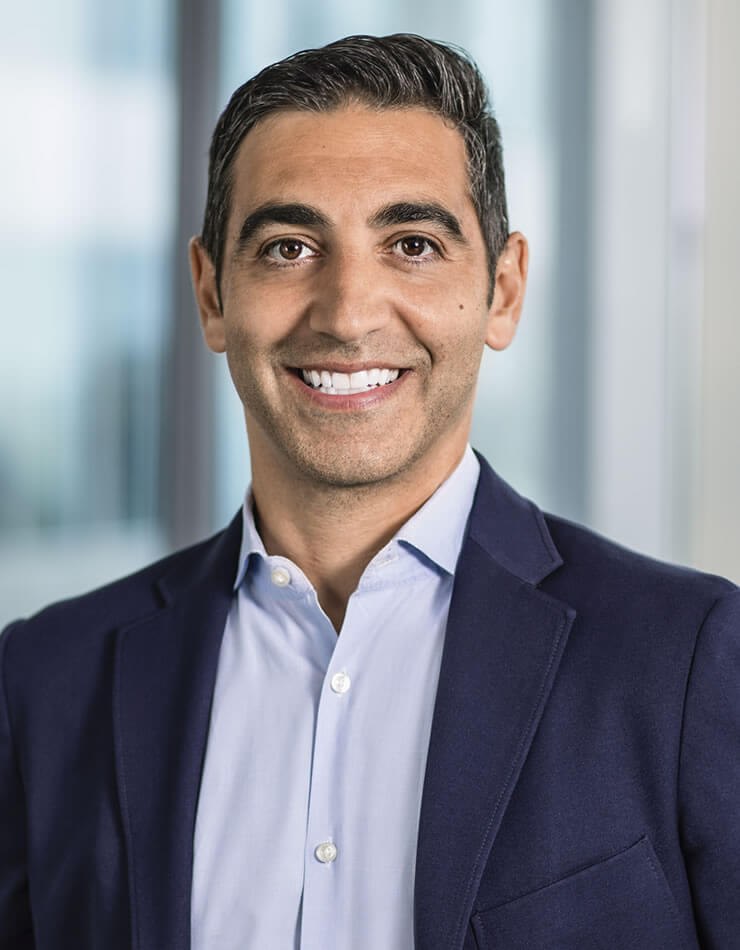Oakmark Fund - Investor Class
Average Annual Total Returns 12/31/20
Since Inception 08/05/91 12.49%
10-year 12.50%
5-year 12.40%
1-year 12.90%
3-month 24.22%
Gross Expense Ratio: 0.93%
Net Expense Ratio: 0.91%
Expense ratios are based on estimated amounts for the current fiscal year; actual expenses may vary.
The net expense ratio reflects a contractual advisory fee waiver agreement through January 27, 2022.
Past performance is no guarantee of future results. The performance data quoted represents past performance. Current performance may be lower or higher than the performance data quoted. The investment return and principal value vary so that an investor’s shares when redeemed may be worth more or less than the original cost. To obtain the most recent month-end performance data, view it here.
The Oakmark Fund achieved a 24% return during the fourth quarter, significantly outperforming the S&P 500 Index’s return of 12% over the same time period. Enthusiasm about the efficacy and timing of the Covid-19 vaccines benefitted many of our most economically sensitive, cyclical holdings during the quarter. For the calendar year 2020, the Oakmark Fund returned 13% versus the 18% return for the S&P 500. While we still have some work ahead of us to close the performance gap against the S&P 500, we’re encouraged by the Fund’s recent performance and are happy to report that it achieved an all-time high NAV at quarter end.
We initiated new positions in Fiserv and KKR during the quarter. (See descriptions below.) We did not eliminate any holdings from the portfolio. As illustrated by our overweight exposure to the financials sector, we believe that many of these holdings remain deeply undervalued, despite their strong performance during the quarter. Several of our holdings in this sector trade below tangible book value and at single-digit multiples of our normalized EPS estimates. Our banks in particular have shown great resilience, passing the Fed’s second round of (severe) stress tests in late 2020 and maintaining strong capital levels and ample liquidity, despite setting aside large sums in anticipation of higher loan losses in the future. The Fed’s recent announcement that large banks can resume their capital return programs should also accelerate their per share value growth.
Ally Financial and Charles Schwab were the best individual contributors for the quarter, and the lowest contributors were S&P Global and Regeneron Pharmaceuticals. No single position cost the Fund more than 15 basis points during the period. Our strongest contributing sectors for the quarter were financials and consumer discretionary, and our lowest contributing sectors were consumer staples and real estate, the latter two being among our smallest sector allocations. For the calendar year, our best individual contributors were Netflix and Facebook, while our biggest detractors were Fiat Chrysler and Wells Fargo.
We thank you, our fellow shareholders, for your investment and continued support of the Oakmark Fund. Below is a brief description of our new additions during the quarter:
Fiserv:
Following its transformative acquisition of First Data Corporation in 2019, Fiserv is now the top provider of digital banking solutions, core account processing software and merchant acquiring services in the U.S. The company’s mission-critical software and services generate highly recurring revenue and are tied to strong secular growth trends within both digital payments and banking. We expect Fiserv’s revenue to grow in the mid- to high-single-digits over the coming years and that the company will enjoy significant margin expansion as it realizes the cost synergies from the First Data acquisition. In our estimate, this would produce near-term EPS growth of more than 20%. Furthermore, with its significant free cash flow generation and excess debt capacity, the company should be able to return nearly 40% of its market capitalization through dividends and share repurchases over the next five years. We believe the risk adjusted return potential is attractive for this well-managed, above-average business that’s currently trading for a below-market multiple on our estimate of normal earnings.
KKR:
KKR is one of the largest alternative asset managers in the world, managing $233 billion in assets across various investment vehicles. Approximately 80% of the company’s assets under management (AUM) is held under capital commitments of eight years or longer. This creates a highly stable management fee stream that hasn’t experienced an annual decline in 20 years. Moreover, KKR’s AUM has been growing at double-digit rates as the company has drawn on its established brand and relationships to expand into new strategies and geographies. Today, 18 of KKR’s 24 strategies are less than a decade old. We believe many of these newer strategies have considerable runway for future growth. Furthermore, we think the market is undervaluing KKR due to the company’s large investments and the volatility of its performance fees. We estimate that KKR’s investments are worth ~$16/share today, or 40% of its current market capitalization, which is considerably higher than its peers. After adjusting for these factors, the company’s shares trade at a low-double-digit multiple of our forward earnings estimate. We find this valuation too cheap for a business with KKR’s growth outlook and return profile.
The securities mentioned above comprise the following percentages of the Oakmark Fund’s total net assets as of 12/31/20: Ally Financial 3.8%, Charles Schwab 3.1%, Facebook Cl A 3.3%, Fiat Chrysler 0%, Fiserv 0.9%, KKR 0.8%, Netflix 2.1%, Regeneron Pharmaceuticals 0.6%, S&P Global 1.2% and Wells Fargo 1.6%. Portfolio holdings are subject to change without notice and are not intended as recommendations of individual stocks.
Access the full list of holdings for the Oakmark Fund as of the most recent quarter-end.
The S&P 500 Total Return Index is a float-adjusted, capitalization-weighted index of 500 U.S. large-capitalization stocks representing all major industries. It is a widely recognized index of broad, U.S. equity market performance. Returns reflect the reinvestment of dividends. This index is unmanaged and investors cannot invest directly in this index.
NAV stands for Net Asset Value. NAV is the dollar value of a single mutual fund share, based on the value of the underlying assets of the fund minus its liabilities divided by the number of shares outstanding.
EPS refers to Earnings Per Share and is calculated by dividing total earnings by the number of shares outstanding.
The Oakmark Fund’s portfolio tends to be invested in a relatively small number of stocks. As a result, the appreciation or depreciation of any one security held by the Fund will have a greater impact on the Fund’s net asset value than it would if the Fund invested in a larger number of securities. Although that strategy has the potential to generate attractive returns over time, it also increases the Fund’s volatility.
Harris Associates L.P. does not provide tax or legal advice. Please consult with a tax or legal professional prior to making any investment decisions.
The information, data, analyses, and opinions presented herein (including current investment themes, the portfolio managers’ research and investment process, and portfolio characteristics) are for informational purposes only and represent the investments and views of the portfolio managers and Harris Associates L.P. as of the date written and are subject to change and may change based on market and other conditions and without notice. This content is not a recommendation of or an offer to buy or sell a security and is not warranted to be correct, complete or accurate.
Certain comments herein are based on current expectations and are considered “forward-looking statements”. These forward looking statements reflect assumptions and analyses made by the portfolio managers and Harris Associates L.P. based on their experience and perception of historical trends, current conditions, expected future developments, and other factors they believe are relevant. Actual future results are subject to a number of investment and other risks and may prove to be different from expectations. Readers are cautioned not to place undue reliance on the forward-looking statements.
All information provided is as of 12/31/2020 unless otherwise specified.






